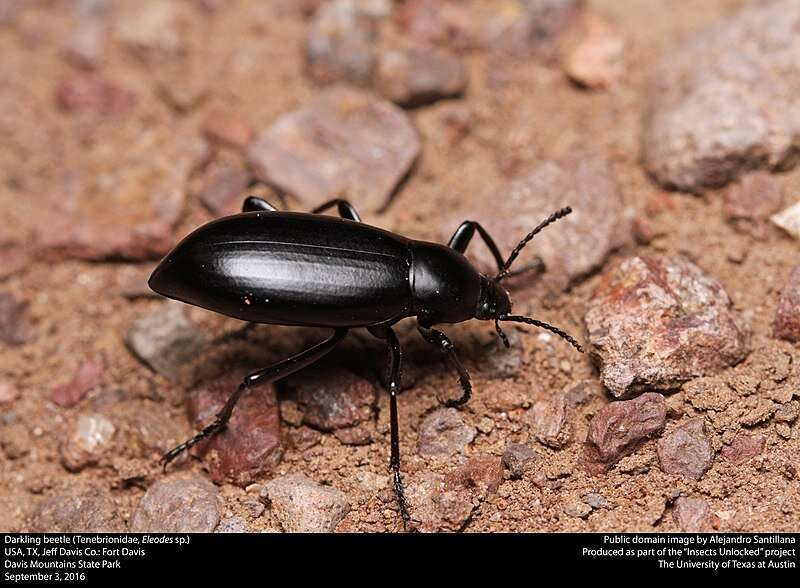Credit: arkling beetle (Tenebrionidae, Eleodes sp.) CC1.0
A team of researchers from the University of Kiel in Germany and Aarhus University in Denmark, has found that darkling beetles create a type of lubricant in their legs to prevent their leg joints from wearing away. They describe their research in a paper published in Proceedings of the Royal Society B.
Prior research has shown that when two stiff biological components come into contact with each other as part of natural movement, some means of lubrication is required to keep the surfaces of both from eroding away due to friction. With mammals, joints are inside the body and are bathed in lubricating material—but insects have exoskeletons that leave their joints open to the air. Up until now, it was not clear how insects kept their joints from eroding. In this new effort, the researchers studied the leg joints of darkling beetles to solve the mystery.
The work involved studying the leg joints of darkling beetles using a scanning electron microscope. The researchers discovered pores in the ends of the leg parts that met each other during movement. The researchers found that these pores secrete a substance. They collected some of the material and tested it using a chemical analysis—they found that it was made mostly of fatty acids and proteins.
The researchers then collected enough of the material from the beetles to find out if it was a lubricant. Then they placed a small amount of it between two glass plates and rubbed them together while measuring how much pressure it took to move them under different loads and speeds. They found that the friction between the plates with the material between them was much lower than it was with no material between them. They also found that the material worked better as a lubricant than vacuum grease—and it also outperformed Teflon.
The researchers noted that the material was semi-solid and fragmented as it was pushed out of the beetles' pore—a process that allowed it to cover the entirety of the leg joints.
More information: Konstantin Nadein et al, Insects use lubricants to minimize friction and wear in leg joints, Proceedings of the Royal Society B: Biological Sciences (2021). DOI: 10.1098/rspb.2021.1065
Journal information: Proceedings of the Royal Society B
© 2021 Science X Network
























